5 Fast-Food Chains Dietitians Avoid at All Costs
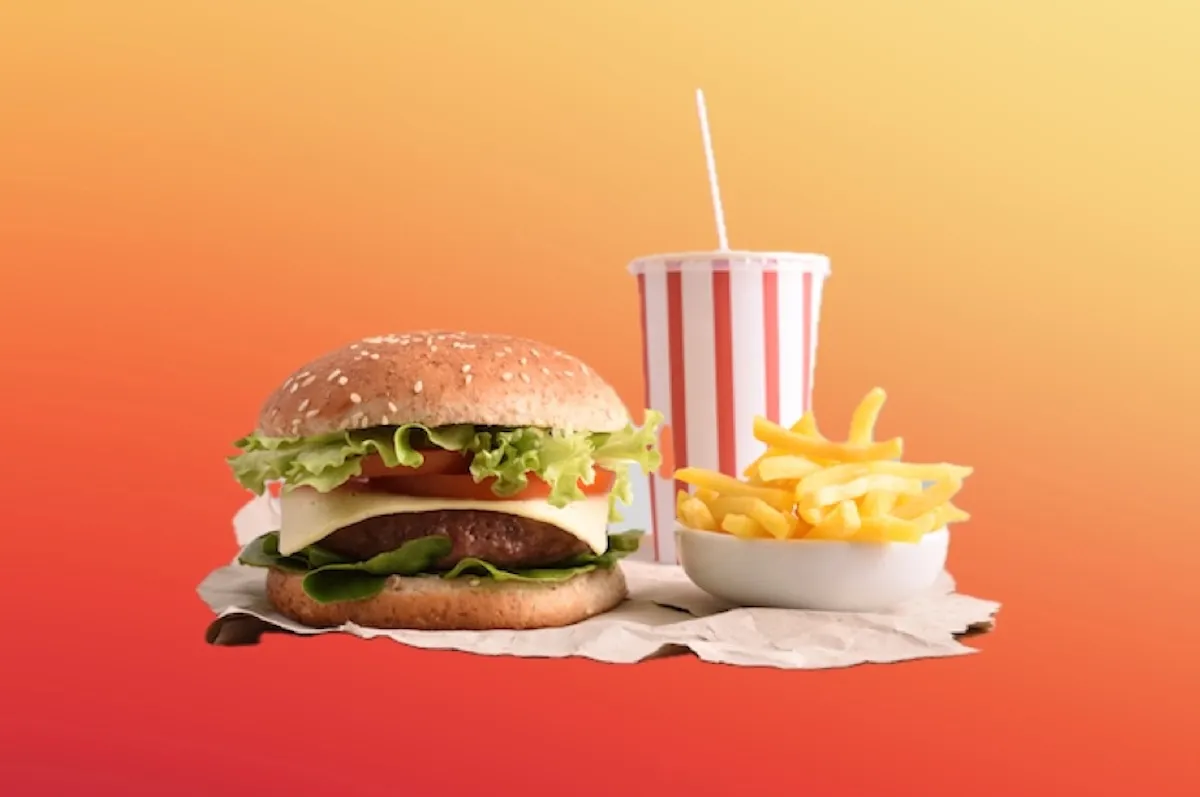
It's no secret that more healthful foods are trending in 2025 (and have been for quite some time). Consumers are demanding more functional options that go beyond just basic nutrition. They're seeking out plant-based foods, protein-packed snacks, and less processed meals overall.
Unfortunately, many fast-food chains are behind the times. These establishments have been known to prioritize convenience and quickness (it's called "fast" food for a reason) over quality and true nourishment. Many of the top players out there are still operating under this agenda. A few even scaled back on more wholesome offerings to simplify their menus during COVID-19, leaving behind a collection of non-diet-friendly picks that could have adverse effects on your health when eaten in excess.
"Fast food is often high in saturated fat, sodium, and added sugars, which, when consumed regularly long-term, can contribute to weight gain, high blood pressure, and increased risk of chronic diseases like heart disease and type 2 diabetes," explains Amy Goodson MS, RD, LD, CSSD. "Many fast-food meals also lack fiber, essential vitamins, and lean protein, making them less balanced and less satisfying in the long run."
But this doesn't necessarily mean you need to ward off fast food altogether. Goodson shares a few tips on how to be more mindful at the drive-thru. She says opting for grilled over fried can help you cut down on unhealthy fats. Adding vegetables where possible and turning down sugary drinks are always good ideas, along with watching your portions and checking nutrition information before you order. Her best and final tip also has to do with pairing lower nutrient options with what she calls "healthy friends".
"For example, if you really want French fries, pair them with a grilled chicken wrap and unsweet tea," Goodson says. "If you want a burger with bacon, first get a small size, then pair it with a side salad and water. Simple swaps can make a big difference over time."
Other dietitians share that fast-casual chains where customization and fresher foods are available can be great alternatives. This would include Chipotle, Panera Bread, Sweetgreen, or CAVA. It also may be wise to avoid or cut back on the following five chains where well-balanced, nutritious meals are hard to come by.
McDonald's
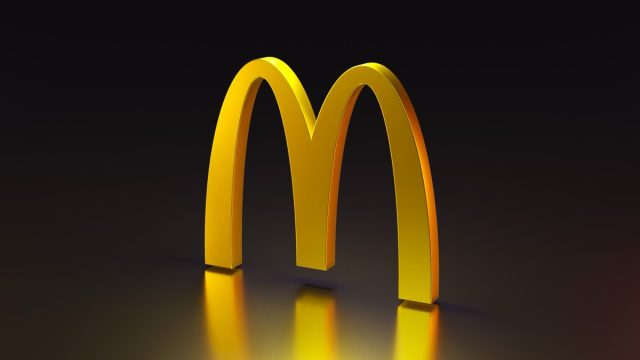
The Golden Arches aren't necessarily a shining beacon of health and nutrition. This reputation has stuck with McDonald's for quite a while, fueled by former "supersize me" options and questionable ingredients. And, with the chain's more recent discontinuation of more diet-friendly items like salads and grilled chicken in 2020, it comes as no surprise that it still makes the list of restaurants dietitians tend to avoid.
Owner of Pennsylvania Nutrition Services Alexandria Hardy RDN LDN says, "I would advise caution with McDonald's, as their primary menu offerings are high in calories, heavily processed, and lack fresh ingredients or customization." Just to take a closer look, the joint's Double Quarter Pounder with Cheese racks up 740 total calories along with 42 grams of fat and 43 carbs. A regular M&M McFlurry is set at 570 calories and 74 grams of sugar. The Big Breakfast with Hotcakes has the highest calorie count of all (among other things) at 1,340, and Hardy also singles out the chain's chicken nuggets–an item that has repeatedly been the subject of criticism.
"McDonald's often relies on highly processed ingredients (ex: McNuggets, which are made from a mixture of mechanically separated chicken, fillers, and artificial additives, then breaded and deep-fried) that contain excessive sodium and unhealthy fats, which can negatively impact cardiovascular health and overall nutrition quality when consumed frequently," Hardy shares.
Raising Cane's
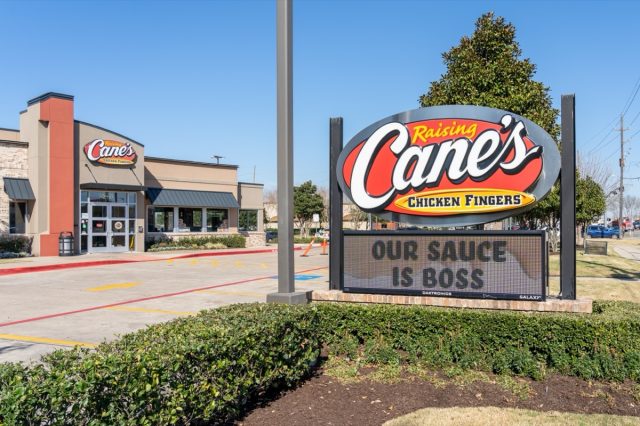
Raising Cane's is one of the restaurants Jordan Hill, MCD, RD, CSSD calls out for its lack of healthy menu options. She says at places like Cane's, the chicken is fried, and "there aren't any fruit or vegetable options to speak of." She additionally notes that it would be difficult to eat at one of the chain's locations and "get a balanced meal that provides adequate amounts of vitamins, minerals, and fiber. It would also likely end up being a meal excessive in calories, high saturated fat and high sodium."
If you've ever been to a Raising Cane's location, then you already know its menu is quite limited. It mostly consists of chicken fingers, crinkle-cut fries, buttery Texas toast, and its famous secret recipe Cane's sauce. Veggies, including carrots and green and red cabbage, can be found in the form of coleslaw, but it's difficult to benefit from their presence when doused in a sweet, creamy dressing.
Both the chicken fingers and fries are fried in an all-vegetable oil blend of soybean oil and canola oil. With this preparation process, even The Three Finger Combo meal–the smallest of the bunch with just three chicken tenders, fries, toast, sauce, and a drink–delivers a minimum of 1,050 calories, 59 grams of fat, 1,730 milligrams of sodium, and 83 carbs.
Five Guys
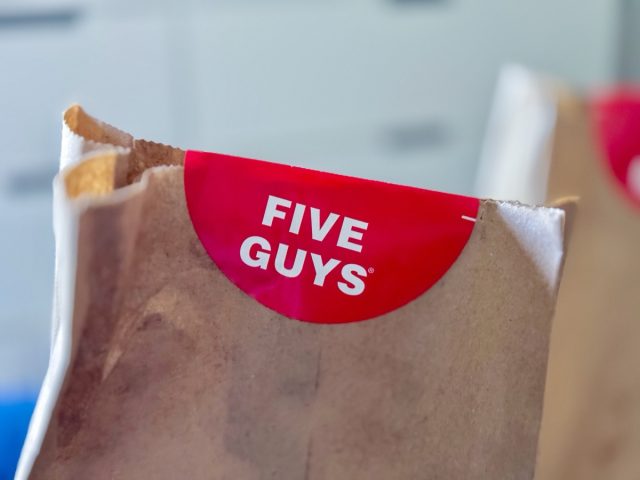
For similar reasons, Five Guys is also high on Hill's watchlist. And there is data out there that further backs up this pick. In October 2024, the virtual medical care platform Plushcare determined that out of 16 popular chains, Five Guys flips the absolute unhealthiest cheeseburger.
Plushcare looked at total calories, sugar, saturated fat, and sodium levels and then used the Department of Health's nutrient profiling method to develop their rankings. Against other picks like Dave's Single at Wendy's, Culver's Butterburger, and the Jalapeno & Cheese Whataburger, the single cheeseburger from Five Guys came out on top with a total unhealthiness score of 50. It holds 73% more saturated fat than any other fast food cheeseburger at 26.5 grams, not to mention its 980 calories and 1,050 milligrams of sodium (and that's all before you add any toppings, condiments, or additional patties).
But that's not all. Five Guys' signature fries also rank highest in Plushcare's report. Although they are cooked in 100% peanut oil, just a regular order contains 953 calories, 41 grams of fat, and 962 milligrams of sodium. And, for dessert, the burger chain's classic vanilla milkshake stands as the third unhealthiest out of 14 options, behind only Fatburger and Sonic.
KFC
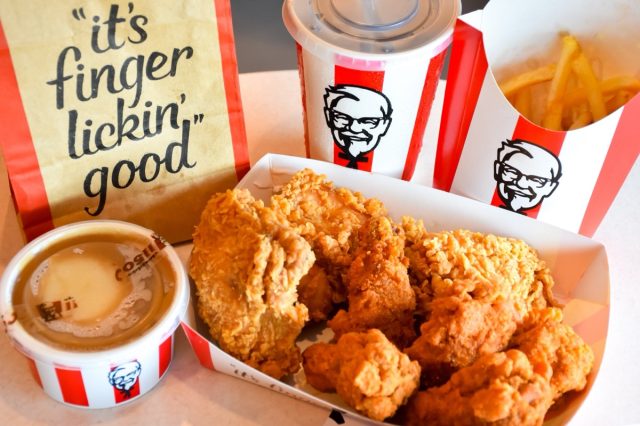
Mashed potatoes, biscuits, and fried chicken sprinkled with 11 signature herbs and spices–it makes for a delicious meal, but perhaps not a balanced, nutritious one. Lisa R. Young, PhD, RDN shares that Kentucky Fried Chicken (KFC) is one of the fast-food chains she would be mindful about eating at, and there are a few key reasons why.
For starters, she says that chains like KFC tend to use low-quality ingredients like processed meats, refined carbs, and artificial additives–ingredients that also carry high levels of saturated fat, sodium, and added sugar. "Meals can exceed daily recommendations for these nutrients in a single sitting," Young says. The Colonel and his army now use low-linolenic soybean oil to fry their chicken, an oil which is processed to contain lower levels of the omega-3 fatty acid linolenic acid. But, a breakdown of the chain's ingredient list also suggests that MSG is thrown into the mix and high-fructose corn syrup can be seen elsewhere on the menu (mainly in the sandwich buns). With all this taken into account, just one fried chicken sandwich from the joint can reach upwards of 38 grams of fat and 1,500 milligrams of sodium.
Part of the problem is also what Young calls "portion distortion". At KFC and similar restaurants, she says, "meals often tend to be oversized, leading people to eat excessive calories." Plus, they lack fiber and whole foods such as fruits, vegetables, and whole grains, which are needed for satiety and digestive health. At KFC, veggies are swapped for starchy sides and the only fruit on the menu comes in the form of cherry pie poppers.
Burger King
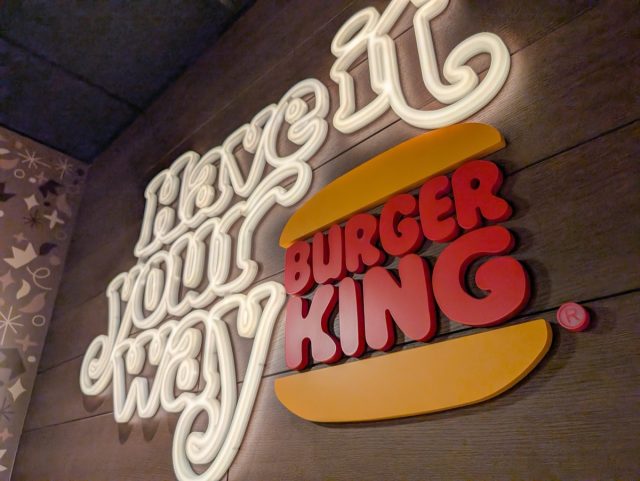
Both Young and Hill agree that Burger King's red, yellow, and blue palace is one to watch out for. Hill points out that one of the chain's shortcomings is its scarcity of healthy options–the same problem seen at Raising Cane's and Five Guys. Like McDonald's, BK did away with choices like salads and grilled chicken over the past several years, leaving fried chicken, fried fish, French fries, fried onion rings—nearly everything on the menu is fried with the exception of its 28 burger options, of course, and handful of shakes and other sweets.
To Young's point, grub options like these are likely to contain processed ingredients and elevated amounts of fat, sodium, and sugar. Burger King has made efforts since 2020 to cut many artificial additives from its menu, including colors, preservatives, MSG, and high-fructose corn syrup. The restaurant also claims its burgers are made with 100% real beef with no fillers, preservatives, or additives. But that doesn't mean they're in the clear.
Just one single Whopper with Cheese boasts 770 calories, 51 grams of fat (15 grams saturated fat, 1.3 grams trans fat), 1610 milligrams of sodium, and 58 carbs. The Crispy Chicken Sandwiches aren't too far off, and with a Triple Whopper with Cheese, those calorie and fat numbers soar to 1,300 calories and 90 grams of fat (33 grams saturated fat, 2.5 grams trans fat).









